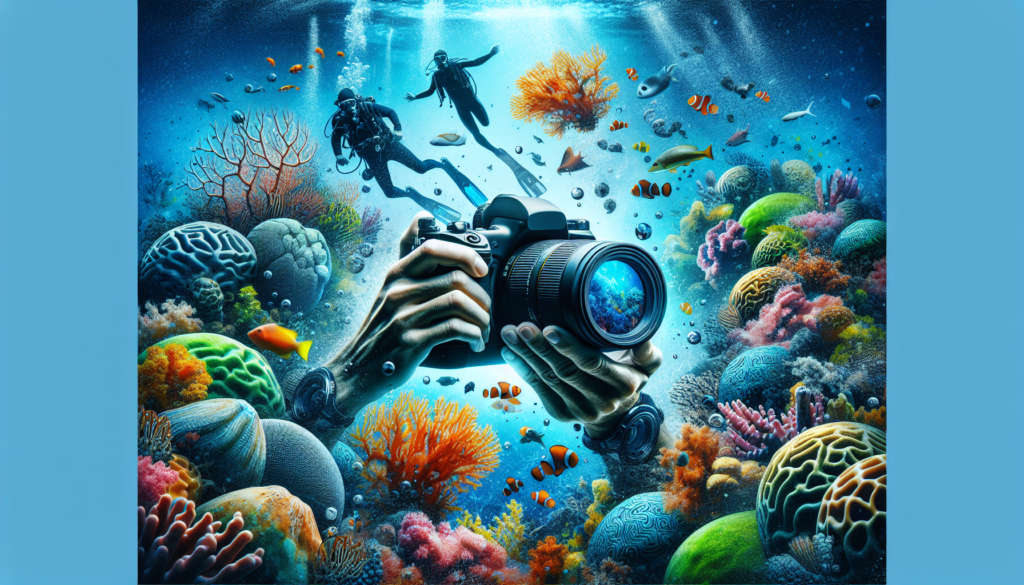The Art and Science of Underwater Photography
Imagine diving into the depths of the ocean, surrounded by a mystical world teeming with vibrant marine life and colorful coral reefs. Now, imagine capturing the beauty of this underwater realm through the lens of a camera. This is the essence of underwater photography a fascinating blend of artistry, technology, and adventure.
From capturing the graceful movements of sea creatures to documenting the fragile ecosystems of the ocean, underwater photography offers a unique perspective on the wonders of the aquatic world. In this comprehensive guide, we will delve into the intricacies of underwater photography, exploring its history, techniques, equipment, challenges, and potential for artistic expression.
The History of Underwater Photography
The concept of capturing images underwater dates back to the early 20th century when pioneering photographers like Louis Boutan and William Thompson experimented with waterproof camera housings to take photographs beneath the surface. Over the years, advancements in technology have revolutionized underwater photography, making it more accessible to enthusiasts and professionals alike.
One of the most significant milestones in the history of underwater photography was the invention of the underwater camera housing by Jacques-Yves Cousteau and mile Gagnan in the 1940s. This innovation allowed photographers to submerge their cameras safely underwater, opening up a whole new world of photographic possibilities.
Today, underwater photography has evolved into a specialized field with dedicated professionals pushing the boundaries of creativity and technical expertise. From capturing stunning images of marine life to documenting underwater archaeological sites, the possibilities are truly endless.
Techniques and Equipment
Underwater photography presents unique challenges that require specialized techniques and equipment to overcome. The most crucial aspect of underwater photography is light or rather, the lack thereof. As light behaves differently underwater, photographers must understand how to adjust their settings to achieve the best results.
One of the key techniques in underwater photography is mastering the art of buoyancy control. Maintaining a stable position underwater is essential for capturing sharp, focused images. Additionally, understanding the behavior of marine life and knowing how to approach them without causing disturbance is crucial for capturing authentic and naturalistic shots.
When it comes to equipment, underwater photographers rely on a variety of specialized gear to ensure their success. Waterproof cameras, underwater housings, strobes, and lenses are just a few examples of essential equipment used in this field. It is essential to invest in high-quality gear that can withstand the harsh conditions of the underwater environment.
Challenges and Considerations
Underwater photography presents a unique set of challenges that require patience, skill, and perseverance to overcome. One of the most significant obstacles faced by underwater photographers is the limited visibility underwater, which can make it challenging to compose and focus shots effectively.
Another common challenge is the distortion of colors and light underwater, which can alter the appearance of images captured below the surface. Understanding how light behaves underwater and how to adjust white balance settings is essential for achieving accurate and vibrant colors in underwater photographs.
Environmental factors such as currents, tides, and water clarity can also impact the quality of underwater images. By staying informed about local conditions and planning their dives carefully, photographers can increase their chances of capturing stunning underwater shots.
Artistic Expression and Creativity
Underwater photography is not just about capturing images it is a form of artistic expression that allows photographers to convey the beauty and diversity of the underwater world. From capturing the subtle movements of a seahorse to the intricate patterns of a coral reef, underwater photographers have the opportunity to create stunning works of art that inspire and educate.
One of the most exciting aspects of underwater photography is the element of surprise. The ocean is a vast and unpredictable environment, and photographers never know what they might encounter on any given dive. This sense of exploration and discovery adds an element of excitement and spontaneity to underwater photography, making it a truly unique and rewarding experience.
Future Trends and Innovations
As technology continues to advance, the field of underwater photography is poised for exciting developments and innovations. From the use of drones and underwater robots to 3D imaging and virtual reality, the possibilities for capturing and sharing underwater images are endless.
One emerging trend in underwater photography is the use of artificial intelligence and machine learning algorithms to enhance image quality and streamline the editing process. By leveraging these technologies, photographers can improve their workflow and produce stunning images with greater efficiency.
Additionally, the rise of social media and online platforms has provided underwater photographers with new opportunities to showcase their work and connect with a global audience. By sharing their images and stories online, photographers can raise awareness about the importance of ocean conservation and inspire others to protect our marine ecosystems.
Expert Opinions
According to renowned underwater photographer David Doubilet, “Underwater photography is a means of exploring the unknown and revealing the beauty of the underwater world to a wider audience. It allows us to connect with nature in a profound and meaningful way, fostering a sense of wonder and appreciation for the marine environment.”
Similarly, marine biologist and photographer Cristina Mittermeier emphasizes the importance of storytelling in underwater photography, stating that “Images have the power to evoke emotions, spark curiosity, and inspire action. By conveying the beauty and fragility of the ocean through our photographs, we can advocate for its protection and preservation.”
Conclusion
To wrap things up, underwater photography is a captivating and rewarding pursuit that offers a unique glimpse into the wonders of the ocean. By mastering the techniques, equipment, and challenges of this specialized field, photographers can create stunning images that inspire, educate, and provoke thought.
Whether you are a seasoned professional or an aspiring enthusiast, underwater photography has something to offer everyone. So grab your camera, dive into the depths, and discover the magic of underwater photography for yourself.



